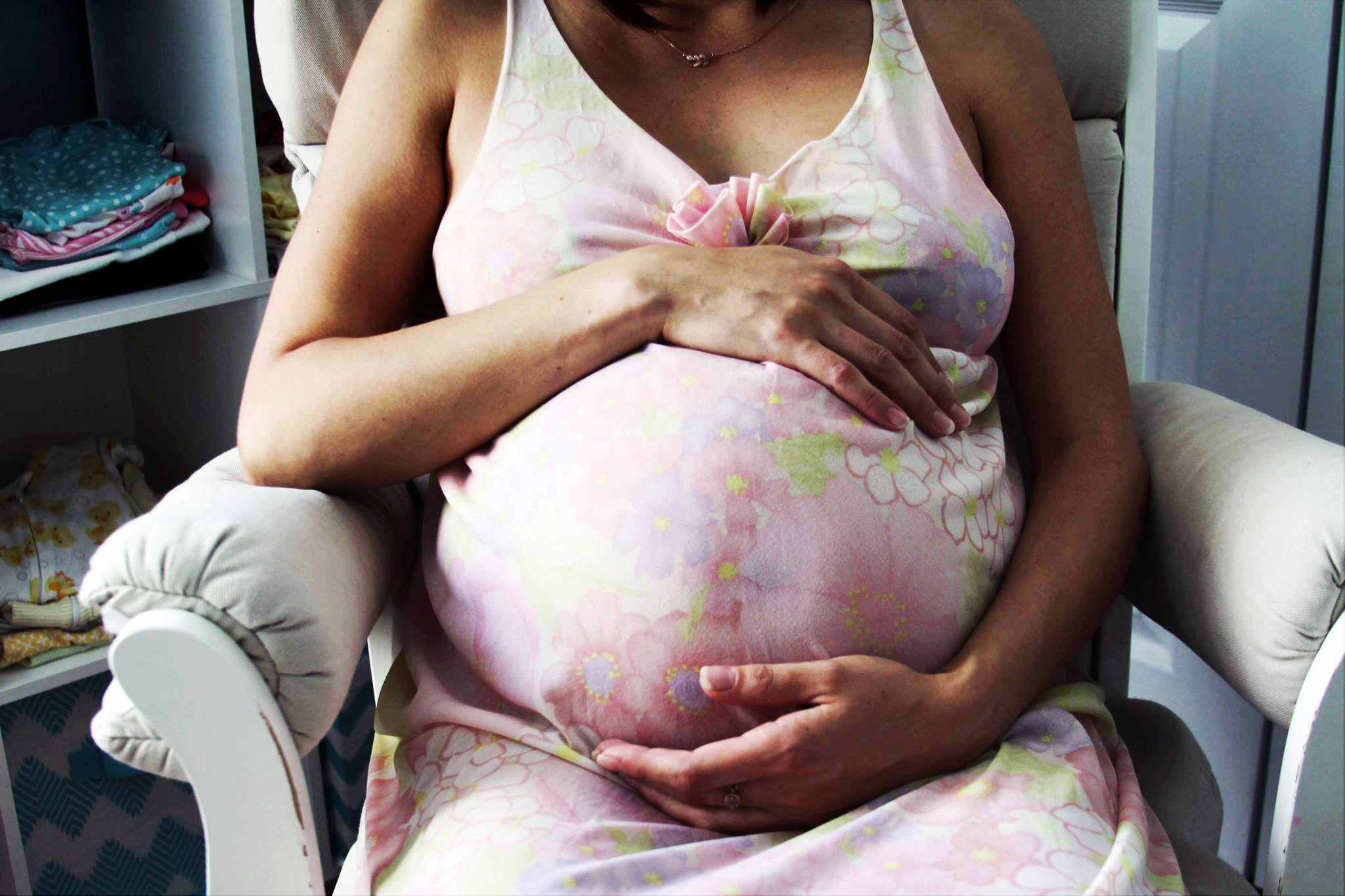Getting your mind, body and soul ready to welcome a child takes a lot of effort. Many moms-to-be spend countless hours listening to and reading information about positions for laboring and delivery. As you gather information, you may easily start feeling overwhelmed by all of the options for positions that exist. How do you determine what is right for you?
DeVonne Mitchell, a certified birth and postpartum doula, grew up thinking that there was only one labor and delivery position.
“That was a birthing person laid back in bed with their feet in stirrups like we see in movies,” Mitchell recalled.
The doula says that despite the stereotypical position most people think of, there are in fact many other suitable options to try during childbirth.
Keep in mind that laboring and delivery are two different things. Labor is the time when a mother’s body is preparing to give birth. She experiences contractions as her cervix dilates. Delivery is when the baby passes through the birth canal into the world. Most hospitals allow a mother to labor in whatever position makes her most comfortable. However, some hospitals have varying rules on how a mother is allowed to deliver. Epidurals also play a major part in laboring (you won’t be able to leave the bed) and what position you can deliver in. So, make sure to check with your healthcare provider if you have a specific position you would like to try.
Here are the best positions for an easy birth according to a doula.
Hands and Knees
This position can allow the baby to move into a more favorable delivery position. While the birthing person is in this position, this also allows the partner to provide a back massage or counter-pressure. Some hospitals will allow a mother to deliver in this position if desired.
Lunges
If labor progress is slow or stalled, lunges can open the pelvis. It also may help the baby rotate to a more comfortable delivery position.
Walking
To help start or speed up labor, mothers can walk to help establish contractions. Walking is very useful during the first stage of labor. It keeps the pelvis moving and helps the baby move downward into the pelvis.
Sitting on a Birthing (Exercise) Ball
It’s best to be in this position with your feet in a wide stance. This is helpful in widening the pelvis. It also allows gravity to help the baby descend. The birthing person can relax and conserve energy, while sitting on the ball.
Kneeling Using a Birthing Ball
This position can help to relieve downward pressure and create room for the baby to rotate. It also alleviates back labor, which is pain in your lower back during labor. This also is another opportunity that allows the partner to provide a back massage or counter-pressure.
Slow Dancing
The movement from slow dancing allows gravity to make contractions more productive. When the birthing person is moving their hips, it encourages the baby to move deeper into your pelvis. For help relaxing, dance to music. The labor partner can reach to the mom’s back for soothing pressure or to give a massage. By engaging with your partner, oxytocin, which is the love hormone, increases and can stimulate uterine contractions.
Sitting on the Toilet
Having a seat on the toilet may help the birthing person to relax the perineum. It is common for the perineum to tear during childbirth. The perineum is the skin between your vaginal opening and anus. Sitting on the toilet gives your body the chance to naturally release, while also taking advantage of gravity to help the baby descend.
Lying on Your Side
This is especially helpful when the birthing person is tired and needs to relax or manage pain. Lying like this helps to take pressure off the muscles and organs. This way, the uterus can easily come forward during contractions. It’s also helpful to use a peanut ball while in this position. This opens the pelvis and again encourages the baby to come down. Some mother’s choose to deliver in this position.
Leaning While Standing
For context, you can do this with a birthing ball for support. In this position, you will relieve pressure on the pelvic floor. These are the muscles that support the uterus and bladder. Once again, gravity is at play in this position, helping the baby move. This position also can create more space for the baby to change positions in your pelvis.
Water Therapy
This can be done in the shower or in a tub. Water therapy eases muscle tension, anxiety and helps the birthing person relax. Some mother’s want to deliver in water however, many hospitals only allow water laboring and do not allow water delivery. Seek out a birthing center or a hospital that allows water deliveries if you desire this form of birthing.
Squatting
Squatting increases pelvic diameter, tilts the uterus and pelvis forward, and places the baby in proper alignment for birth. This position can also relax and stretch the pelvic floor muscles. More and more hospitals are starting to allow mother’s to deliver in a squatting position. Some even offer a squat bar above hospital beds to help make this position easier to hold.
